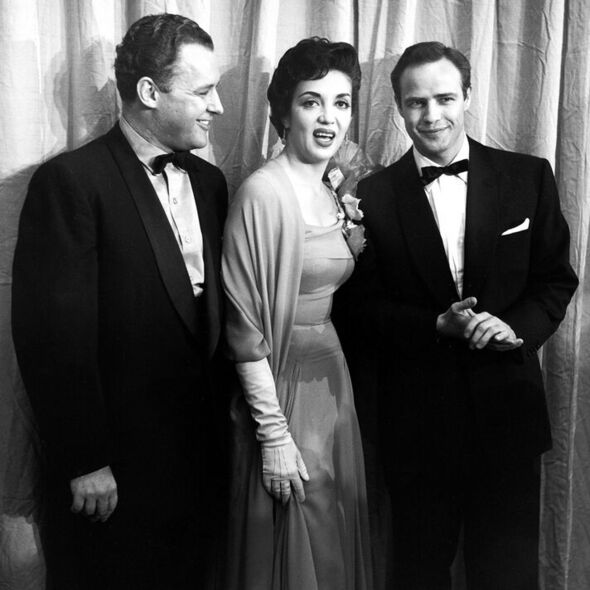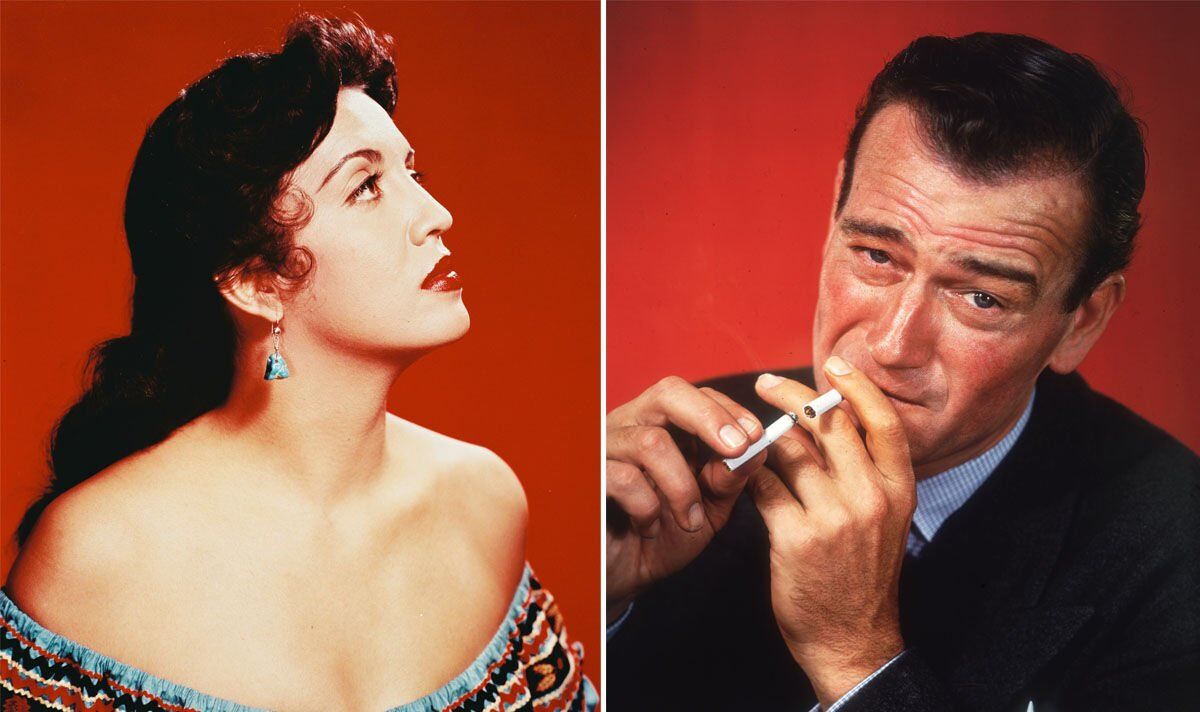Elvis was notorious for wanting and wooing his female co-stars but also shared the screen with legends like Angela Lansbury in Blue Hawaii. Towards the end of his film career, he shared the screen with a woman who had beguiled some of Hollywood’s greatest alpha males. In 1968’s Stay Away Jo, released 55 years ago this week, the US star and Mexican icon Katy Jurado rather dubiously played Apache Indians.
The actress was making a comeback after fleeing La La Land following the collapse of her tumultuous marriage to Ernest Borgnine. She had previously also beguiled yet more Silver Screen tough guys like Burt Lancaster, Yul Brynner and Clint Eastwood and had always been a uniquely powerful female presence off-screen and on throughout her career.
Jurado blazed the trail for Hispanic actresses but, like Grace Kelly, cane from a family that looked down on acting. María Cristina Estela Marcela Jurado García had been born into a once immensely wealthy dynasty that had owned much of what would become the state of Texas. Her cousin Emilio Gil was the President of Mexico from 1928-1930.
Turning her back on her family, she married at 19 in 1939 and was divorced with two children at 23 just as she became an instant success in Mexican cinema – while also pursuing a sideline career as a film and bullfighting reporter.

Already a star in Mexico, while reporting on a bullfight in 1951 she was spotted by Westerns director Budd Boettecher and his friend John Wayne. Both were smitten, one professionally and one very personally.
Boetticher cast her immediately in the film The Bullfighter and the Lady while Wayne pursued her romantically and they began to date. At the time she barely spoke any English and learned her lines phonetically.
Wayne, and later Marlon Brando, were both clearly attracted to exotic Latin looks. Wayne’s three wives were Josephine Alicia Saenz, Esperanza Baur and Pilar Pallete, but Jurado turned him down.
The same year she also dated Yul Brynner, but her next high-profile role would catapult her to career and awards glory – and catch the of another Hollywood legend.
Offered a part in 1952’s High Noon opposite Gary Cooper and Grace Kelly, Jurado threw herself into English classes. Her hard work paid off and she won a Best Supporting Actress Golden Globe for her role as the proud ex-lover of Cooper’s heroic Marshall Will Kane.
Kelly might have been a major star in the US but Jurado was enraged when she realised the other actress had more close-ups. She angrily confronted director Fred Zinnemann, demanding more for herself and accusing him of being in love with her co-star.

Her indomitable will and fiery temper certainly impressed Marlon Brando, who was juggling two other formidable Latin women at the time – West Side Story’s Rita Moreno and Movita Castaneda (who he later married).
Brando said he couldn’t resist Jurado’s “enigmatic eyes, black as hell, pointing at you like fiery arrows.” He arranged a meeting while he was in Mexico filming Viva Zapata!
The actress herself was dismissive of her looks but aware of the power she had over men: “I knew that my body was provocative, but also that I was not beautiful, although… my physique was different and very sensual.”
Jurado went into her affair with Brando with eyes wide open, intending it to be a swift and fun encounter but it became something far greater.She said: Marlon called me one night for a date, and I accepted. I knew all about Movita. I knew he had a thing for Rita Moreno. Hell, it was just a date. I didn’t plan to marry him.”
In the end, they were together, on and off, for nine years, also overlapping with Jurado’s 1953 fling with Charlton Heston on the set of the Western film Arrowhead.Their relationship peaked when Brando cast her in his directorial debut One-Eyed Jacks in 1960. His notoriously tumultuous marriage to Anna Kashfi had ended in 1959, but he was also still seeing Castaneda, and married her in 1960.

Jurado, meanwhile had met actor Ernest Borgnine on the set of Vera Cruz in 1954 and they had married in 1959. Like all the relationships in that extended circle, it was an explosive union, with later accounts of verbal and sometimes physical violence.
Jurado’s career in the 1950s was split between award-winning roles in Mexico, and Hollywood, where she was cast primarily in Westerns as her looks suited both Mexican and American Indian roles. In 1954, she received an Oscar nomination for playing Spencer Tracy’s Comanche wife in Broken arrow. She also appeared on Broadway in 1956’s The Best House in Naples.
Her relationship with Brando was over by 1963 and her increasingly unhappy marriage to Borgnine ended in 1963. A distressed and disillusioned Jurado returned to Mexico but was tempted back to Hollywood in 1965. Her 1968 role opposite Elvis was part of a career that continued through the next three decades across stage, TV and movies.
Thirty years later, in 1998 she received her second Ariel Award (The Mexican film awards) for El Evangelio de las Maravillas and also cameoed in Stephen Frears’ Hi-Lo Country. Jurado died at home in Mexico on July 5, 2002. Her star on the Hollywood walk of Fame confirms the extraordinary trailblazing impact she had on the industry – as well as the many men who loved her along the way.
